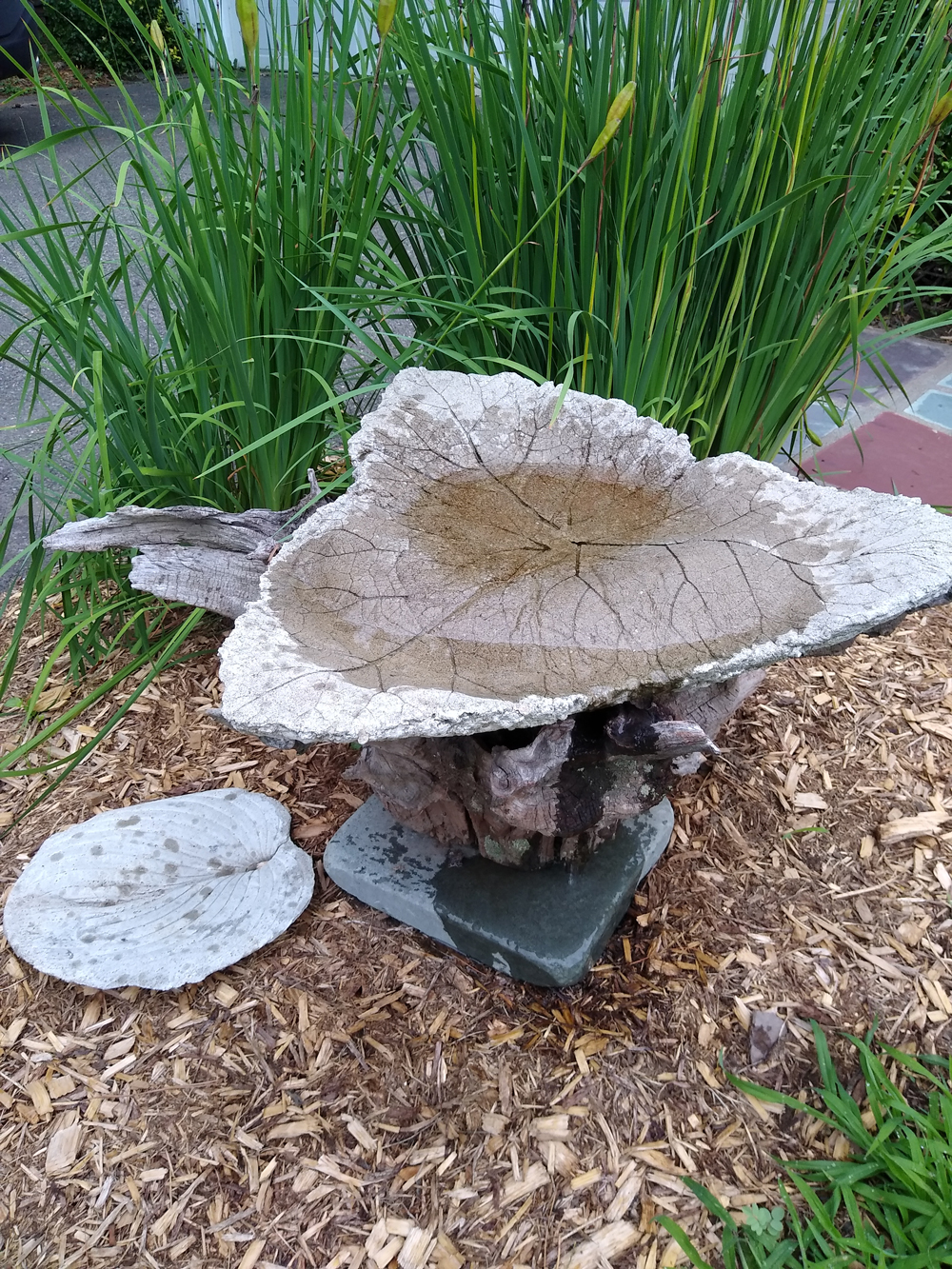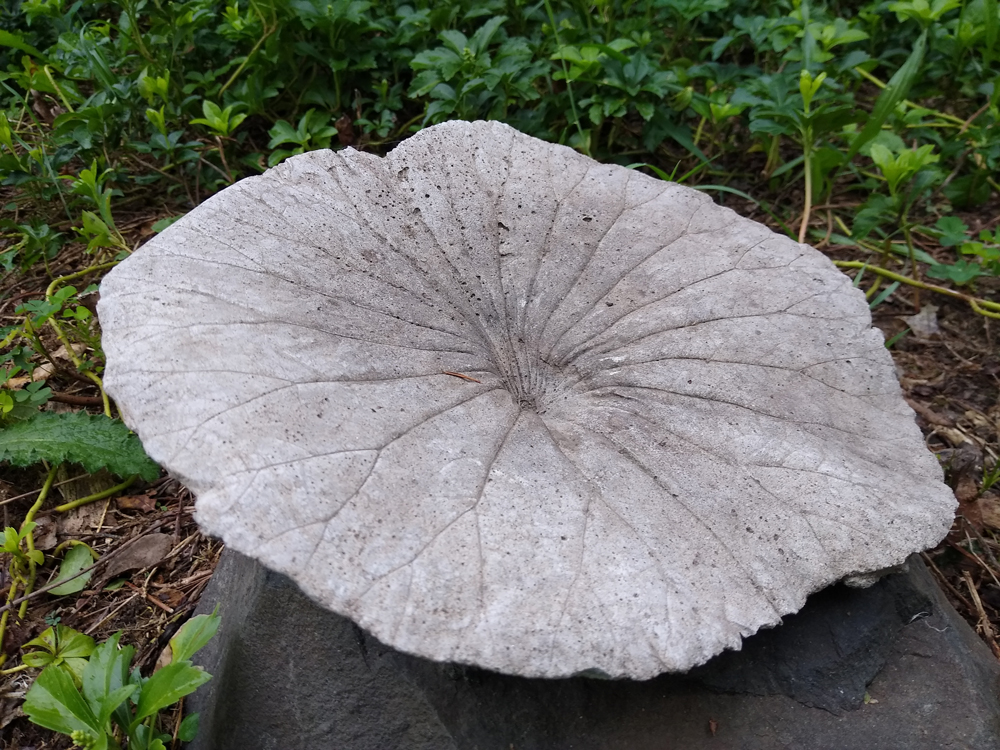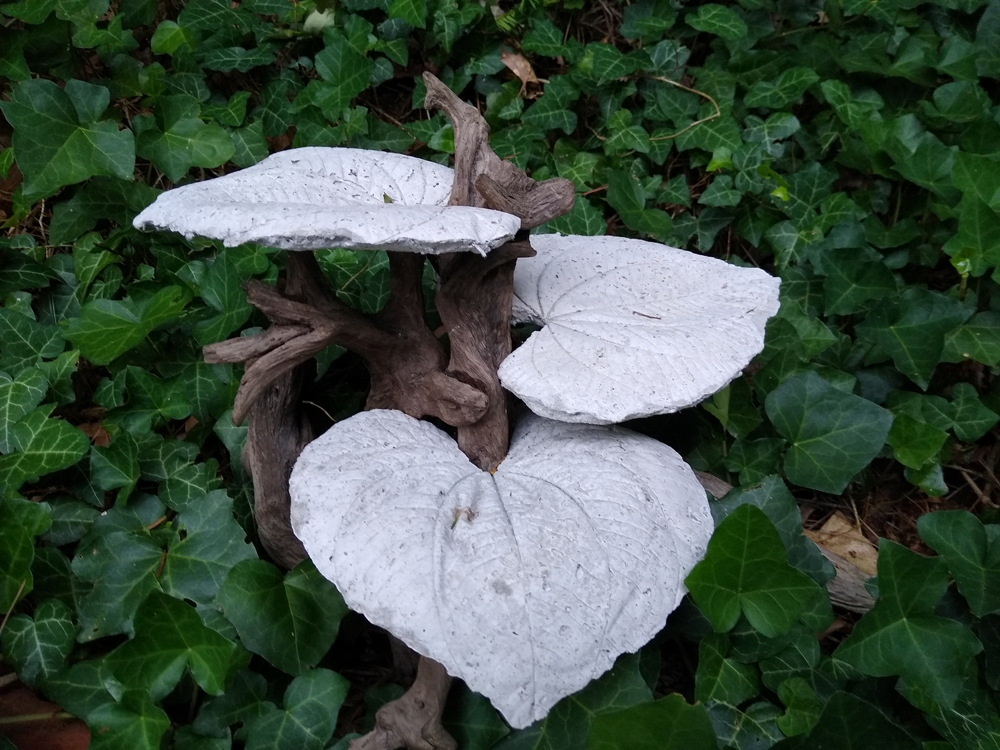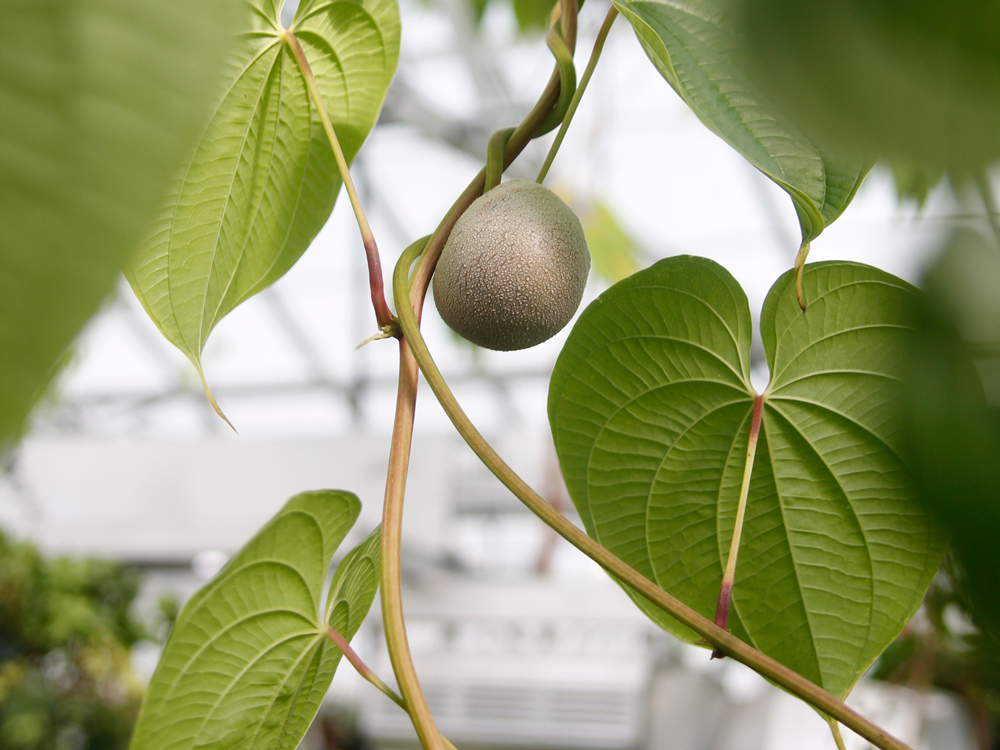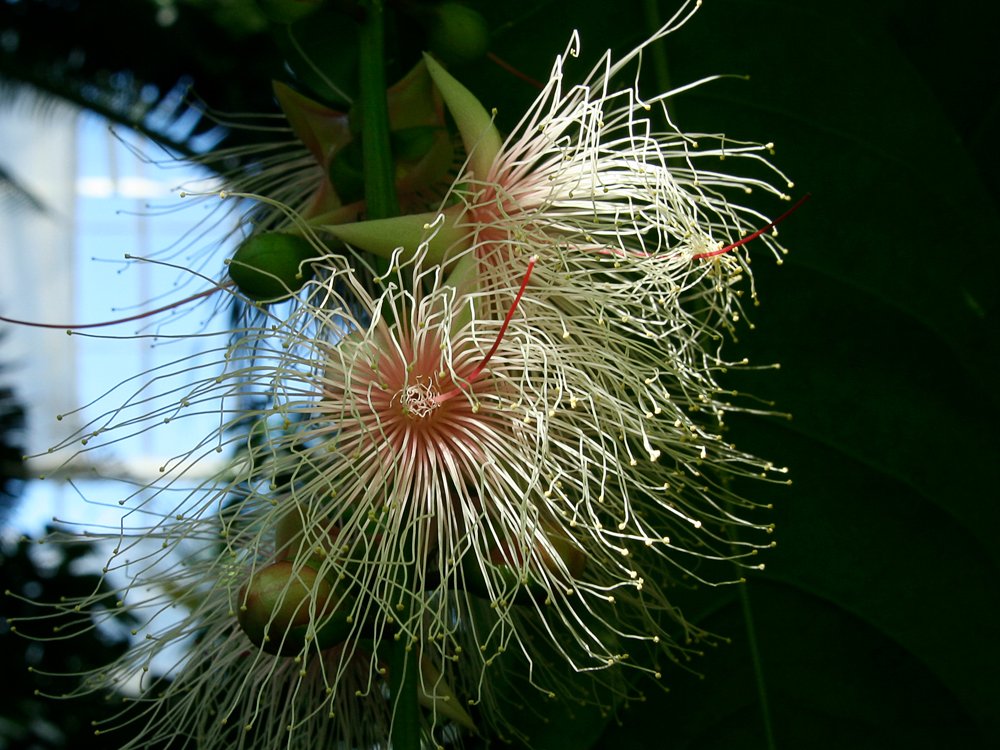Pamela Dods ’08 AC works in the Botanic Garden in a mainly administrative position that includes the joyful task of photographing the plant collection for documentation and use in their print and digital publications. Through her job, she writes, “I’ve learned so much about the wonder and diversity of the plant world; it never ceases to amaze me. Having been a lifelong lover of plants I consider myself very lucky to be a part of the Botanic Garden.”
Pamela’s love of plants in all their various forms, coupled with her urge to create, inspired her to make concrete leaf castings. She makes them by placing the leaves on damp mounded sand, which allows her to shape the castings into three dimensional forms. Some were shaped to hold water, others to capture the natural leaf form. She’s experimented with leaves from different plants, selecting them for their prominent venation. The plants represented here are hostas, burdock, aristolochia, and lotus—and the air potato!
Why a three tiered sculpture of the air potato, you ask? It was an act of serendipity. She was making castings from the leaves of Dioscorea bulbifera, common name, air potato, when she remembered a piece of driftwood she’d found a long time ago. Inspired by other artists making fountains and other decorative ideas made with leaf castings, she tried putting the leaves and castings together. The amazing thing is that the leaves are not permanently attached; they are just held in by friction and balance.
Still why the air potato? The leaves have a particularly beautiful vein pattern. The name comes, as you can see in this photo from the Lyman greenhouse, from its fruit.
For those who might be interested in taking up concrete casting, Pamela offers this advice: “I started out using regular concrete premix, but then started using a combination of that and a smooth top coat mix to get the fine details. Anyone wanting to try this should look around online for instructional videos. It’s not hard, but you need a lot of room if you’re doing bigger leaves. There are a lot of different materials out there and they’re relatively inexpensive for those who like to experiment.”
In lieu of a headshot, Pamela offers what her eyes see rather than what we can see of her eyes.
